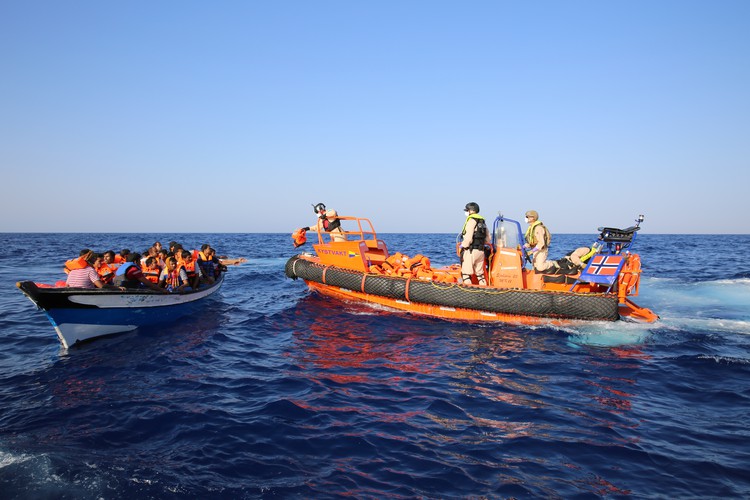The number of migrants arriving in Italy in July increased to almost 25,300, up 12% when compared to the same month of 2015. This brought the total number of migrants detected in the Central Mediterranean to nearly 95,000 in the first seven months of 2016, in line with the figure from last year.
News
Number of migrants arriving in Italy up 12% in July
2016-08-12

Nigerians and Eritreans accounted for the largest share of the migrants in the region.
Putting the lives of migrants in grave danger, people smugglers have been forcing them onto even more overcrowded boats. In recent months, poor quality rubber boats accounted for four out of every five vessels used by people smugglers in the Central Mediterranean. Many of the migrants spoke of being forced onto the dinghies and small wooden boats despite fearing for their lives.
EASTERN MEDITERRANEAN
Meanwhile, the number of migrants in the Eastern Mediterranean, especially the Greek eastern islands in the Aegean, remains well below the figures from earlier in the year. In July, there were some 1,800 people detected illegally crossing the region’s external borders, down 97% from the same month a year ago.
Syrians continued to make up the largest percentage of the migrants, although they accounted for only a quarter of all arrivals. They were trailed by nationals from Pakistan and Afghanistan.
In the four months since the EU-Turkey statement came into effect and the former Yugoslav Republic of Macedonia applied stricter border policies at its border with Greece, some 8 500 migrants have been detected in the Eastern Mediterranean region. This compares to nearly 151 000 in the first three months of this year.
WESTERN BALKANS
The significant drop of detections of illegal border crossings also continued at EU’s external borders on the Western Balkan route, where the figure dropped 94% year-on-year to 2 160. Afghans accounted for almost a third of the detections.
Note:
The data presented in this statement refer to the number of detections of illegal border-crossing at the external borders of the European Union. The same person may attempt to cross the border irregularly several times in different locations at the external border.